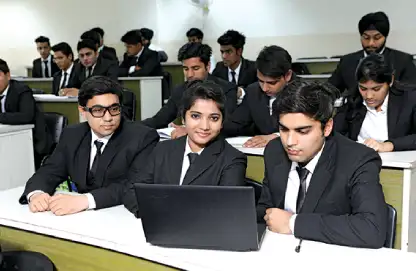The programs being offered under this department are industry-oriented. Apart from the classroom lectures, the thrust is mainly given on practical aspects of functioning of media industry and therefore, become more relevant and engaging.
The students tend to learn every aspect of media, communication, designing and also the art of film making. The department has its own well equipped audio visual studio where different programs like news bulletins, panel discussions, group discussions, debates, open house sessions etc are not only organized but recorded which are mainly produced by the students.
Not only this, the students are also sent to the field to interview various celebrities, cover various events of importance. In nutshell, the students come out of the university as confident and expert in their fields. It’s mandatory for all the students to go for field project to understand nuances of the media profession.






